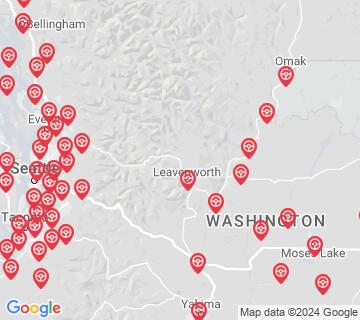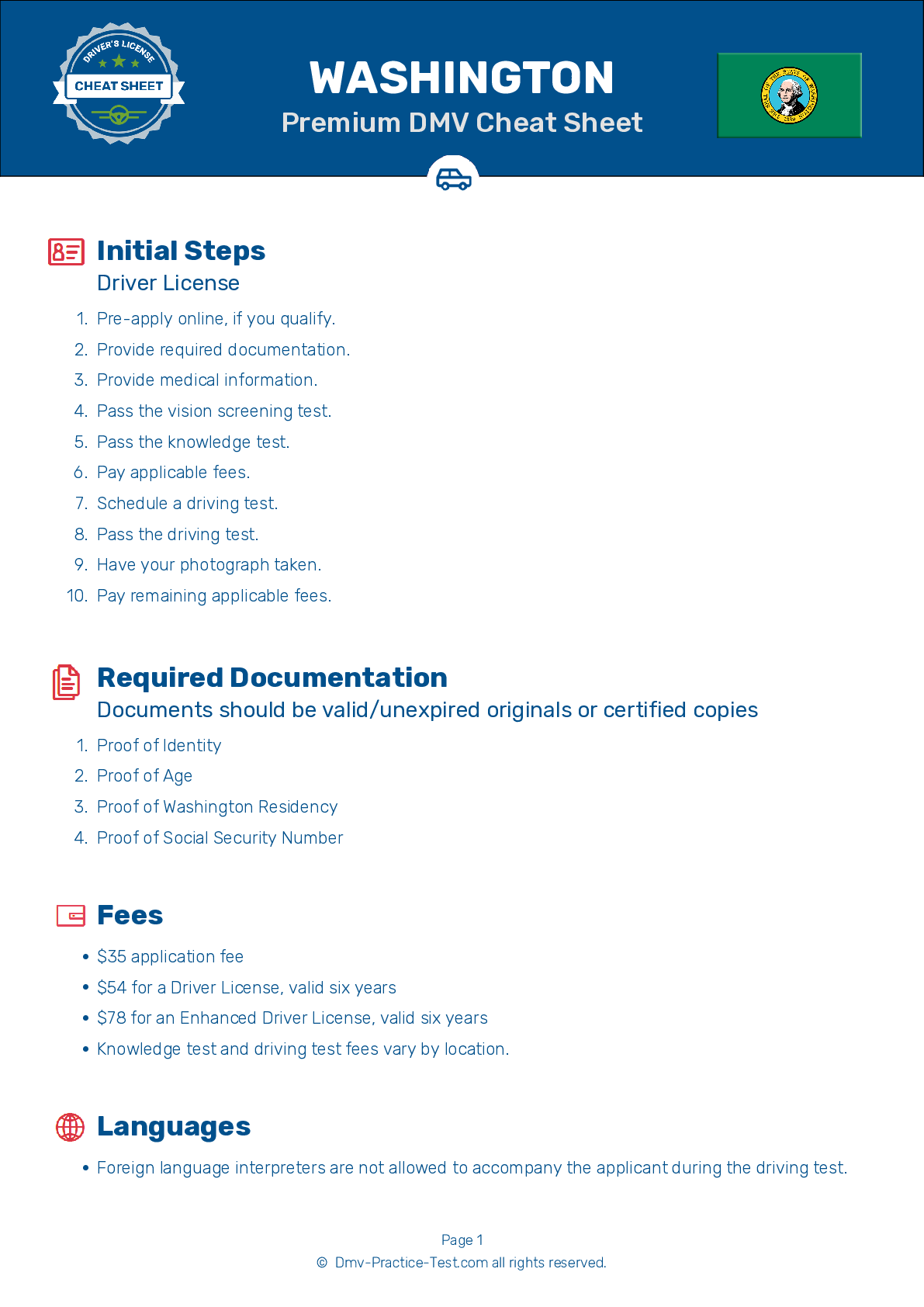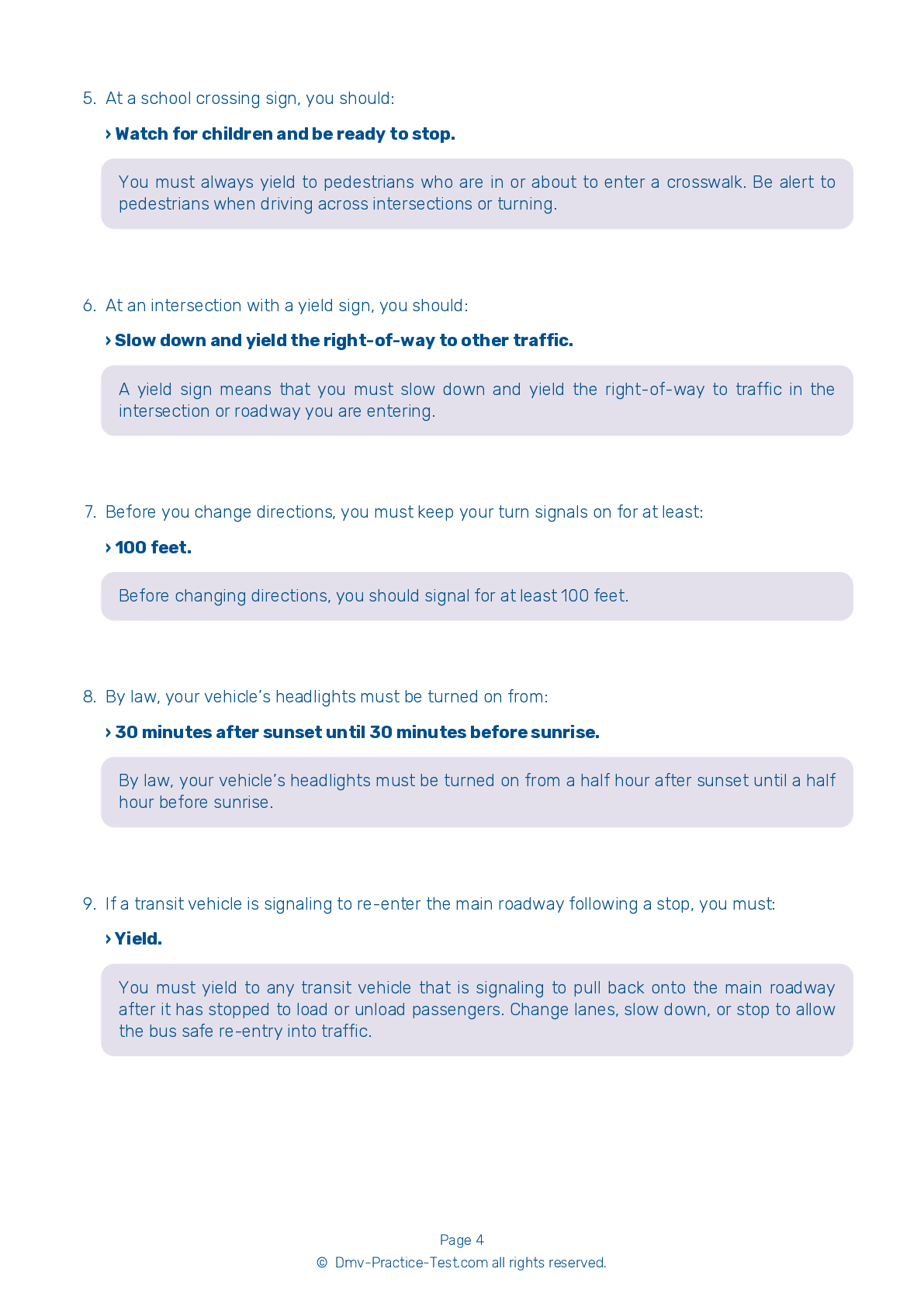FREE Washington DMV Practice Test #24 Page 3 of 4
The Washington DMV practise examinations have been updated for January 2025. It includes questions based on the Washington Driver Handbook's most significant traffic signals and legislation for 2025. Use actual questions that are very similar (often identical!) to the DMV driving permit test and driver's licence exam to study for the DMV driving permit test and driver's licence exam.
On the practise exam, each question gets a tip and explanation to help you remember the concepts. The written component of the official Washington DMV test will feature questions about traffic rules, traffic signs, and driving statutes, as well as knowledge from the Driver Handbook.
To obtain a passing grade, you must correctly answer 20 of the 25 questions. Use the practise exam provided by the Washington Department of Motor Vehicles to help you prepare for your instruction permit or driver's licence.
The DMV exam is available in several languages.
Using any kind of testing assistance will result in an automatic fail, and the DMV may take additional action against your driver's licence, so stay away from it.
13 . When approaching railroad tracks, you should:
When approaching railroad tracks, you should look, listen, slow down, and be prepared to stop for trains or other vehicles that may be using the rails.
14 . Drivers who have consumed alcohol before getting behind the wheel:
Alcohol is a depressant that negatively affects judgment, vision, concentration, understanding of reality, and reaction time. It is never safe to consume alcohol in any amount before getting behind the wheel of a car.
15 . If traffic signals at an intersection are not functioning due to a power outage:
If a traffic light at an intersection is not functioning due to a power outage, yield to other drivers in the same manner as you would when approaching a four-way stop. When it is your turn, proceed through the intersection with caution.
16 . Look over your shoulder to check your blind spot when:
Look over your shoulder to check your blind spot every time you want to change your vehicle's position. If you are turning, changing lanes, or pulling toward or away from a curb, you should check your blind spots.
17 . When driving on wet pavement, it's important to remember:
Wet roadway surfaces can be dangerously slick, especially immediately following a rainfall. When you are driving on wet roads, your vehicle is traveling on a thin layer of oil, dirt, and water. Slow down when there is heavy rain, standing water, or slush on the road to reduce the risk of your wheels losing traction on the slick surface.
18 . When preparing to turn left, drivers should:
As you approach a left turn, signal your intentions three to five seconds in advance. Continually check your rearview mirror as you gradually slow down. On a multilane road, move into the left lane before reaching the intersection where you plan to turn. Yield to traffic and pedestrians and turn when your path is clear.
Search the best driving school in your neighbourhood
2025 Washington | Frequently Asked Questions
1. Complete a driver education course if you're under 15 ½.
2. Visit a driver licensing office.
3. Provide proof of identity, Social Security number, and residence.
4. Pass the knowledge test.
5. Pay the required fee.
6. If you're under 18, a parent or guardian must sign the application.
Remember, with a permit, you must always have an adult 21 years or older in the car with you.
1. Not checking mirrors and blind spots.
2. Incorrect signaling or forgetting to signal.
3. Lack of steering control.
4. Improper lane positioning and changing.
5. Not following traffic signs or signals.
6. Inadequate observation at intersections.
7. Speeding or driving too slowly.
8. Failing to yield the right of way where necessary.
Remember, practice is key to overcoming these errors.




